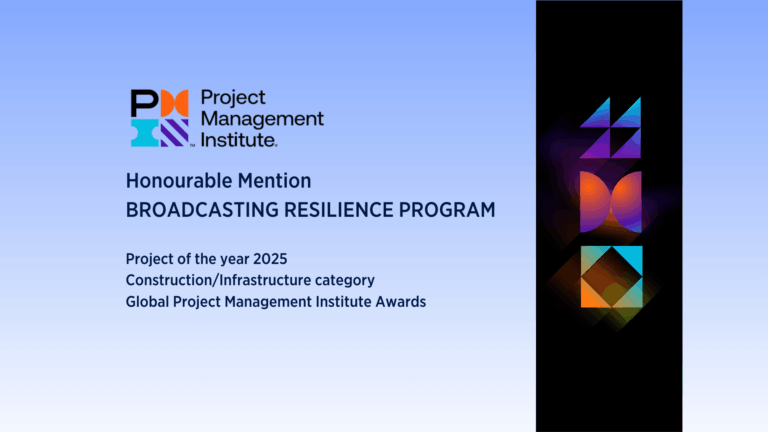In today’s bustling sports, entertainment and events industry, audiences crave constant stimulation and engagement – any issues with communication or technology can greatly affect the success of an event.
As Taylor Swift’s dynamic performances and uncanny ability to generate a viral buzz continue to captivate the world, the necessity for seamless connectivity in large-scale venues has never been more evident.
Fans highly value live events such as sports games and concerts, and they’re using technology like electronic tickets and in-seat food and drink ordering to enhance their experience of attending. Digital technologies can enhance visitors’ event experiences while also creating new revenue opportunities. Advanced connectivity makes this possible.
Elevating experiences: the vitality of connectivity in large-scale venues
Advanced connectivity at live events has become essential for success. No longer just a “nice to have,” it’s now a crucial element for venues to thrive.
Attendees have welcomed the convenience of connectivity, such as electronic tickets and smartphone apps, that simplify their experience. However, the focus is now on orchestrating memorable experiences.
By leveraging cutting-edge technology and digital solutions, venue operators can create an even more seamless and efficient experience for attendees. Artificial intelligence, machine learning and automation enable venue operators to anticipate and meet the needs of attendees before they even realize them. Venues can find new ways to customize their offerings, making them more valuable and impactful.
Advanced connectivity has transformed the way many large-scale venues manage their operations. Venue operators can use real-time data analytics to manage crowd flows, find bottlenecks, address issues quickly and efficiently, and enhance safety.
IoT sensors can assist in waste management by monitoring when bins require emptying. They can also send alerts when essential items such as soap and toilet paper need to be replenished. Video analytics can also be used to quickly identify and address any significant spills or obstructions in public areas.
This ensures that everything at the venue runs efficiently. It also makes the venue safer and more comfortable for everyone. The smoother and easier the experience, the higher the chances of event attendees wanting to return for more.
Additionally, venues can offer immersive experiences such as augmented reality (AR) and virtual reality (VR) to transform how they distribute content and interact with their spectators. Attendees can access event applications and engage with digital displays and content, creating a more engaging and memorable experience.
Venues can offer unique event enhancements such as premium seating upgrades, exclusive access to VIP concierge services and immersive digital content and engagement.
Venue operators can learn about attendee behavior and spending patterns by collecting and analyzing real-time data. Venues can use this information to customize marketing, optimize pricing strategies and offer targeted promotions, increasing revenue streams.
Spectating is no longer sufficient; it’s about partaking, engaging and sharing.
Challenges and solutions in digital infrastructure improvement
While the demand for fast and reliable coverage grows, achieving this goal involves overcoming several challenges. Distributed antenna systems (DAS), Wi-Fi and private networks are essential for ensuring consistent coverage and capacity within venues.
Bringing advanced connectivity to these event spaces requires significant planning and consideration, including location needs, user density and technological limits before implementation. Deploying the network involves placing equipment strategically and installing cables, antennas and access points, making it a complex process. This phase demands not only technical expertise but also a sensitivity to minimizing disruption and long-term visual impact.
The shared infrastructure model
The adoption of shared infrastructure models offers a solution to the complexities of upgrading connectivity in large-scale environments. Here are some of the benefits.
- Customers have the flexibility to choose from a variety of mobile network operator options while maintaining consistent, high-quality service.
- A technology-agnostic approach can enable the integration of diverse connectivity technologies. This flexibility allows interoperability with various systems, the adoption of the latest technology and avoids the restrictions that come with a single solution approach.
- It promotes inclusive availability for all. Robust connectivity fosters a cooperative atmosphere and improves the overall experience.
- Large venues can significantly reduce capital expenditure associated with deploying and maintaining network equipment. This model facilitates strategic resource allocation for other crucial aspects of these expansive properties.
- The ready-made foundation allows for quicker implementation, reducing the lead time for setting up reliable networks. This agility is particularly crucial for swiftly adapting to dynamic event requirements.
- Scalable solutions can expand to meet increased user requirements during events. This ensures that these spaces remain adaptable to the ever-changing demands of visitors.
- Shared resources and built-in redundancy measures minimize the likelihood of network failures. This ensures reliable and stable internet connection for important business operations and major events in large venues.
How to get started
Before starting a network design and deployment project, it’s crucial to create a connectivity vision. Approach this comprehensively, looking beyond minor enhancements. Consider the wide-ranging advantages of wireless solutions and identify the potential applications.
Assess the current state versus the desired state to achieve this vision. Feedback from stakeholders and attendees is an important part of this as it helps to identify potential use cases and current pain points.
After gathering these insights, the subsequent phase involves developing a connectivity road map. The blueprint should align with the business strategy and unpack the venue connectivity concept, demonstrating the benefits and opportunities of the required investment. The plan should also detail specific timelines, resources and strategies to overcome challenges.
Having an experienced partner to assist at each step is invaluable. They become essential collaborators in planning and executing the project effectively. Organizations can leverage the expertise, scalability and cost-effectiveness of shared infrastructure providers to create an environment that is prepared for the future.
Embracing this collaborative approach not only strengthens individual networks but also contributes to the creation of a more connected and resilient telecommunications ecosystem for large-scale venues and smart communities.







